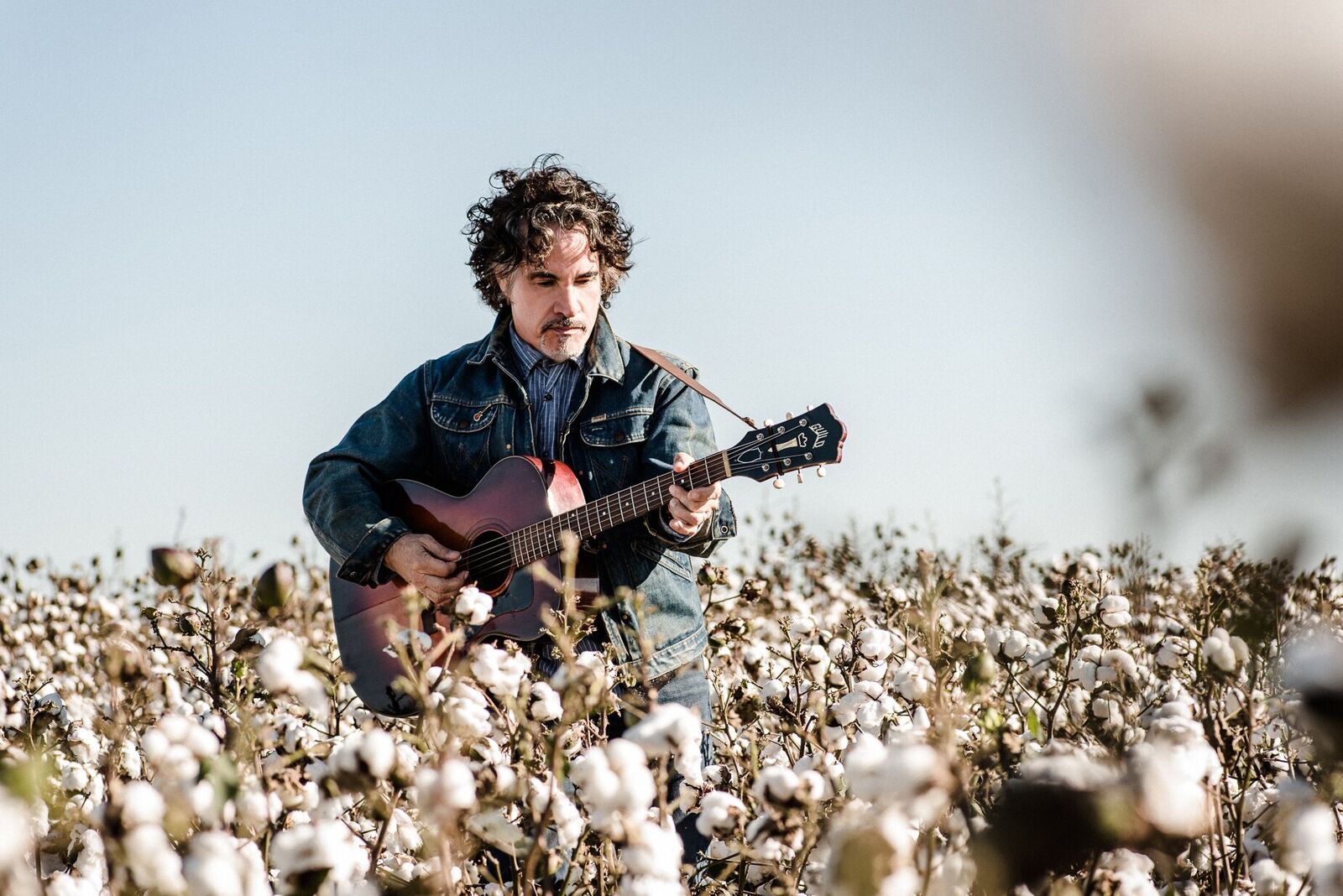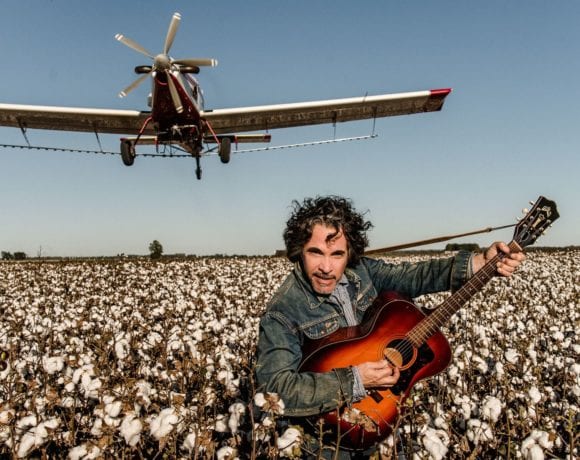BY GRACE MCQUADE
When music fans think of Rock and Roll Hall of Famer John Oates, old-time country music tinged with jazz and blues isn’t necessarily what comes to mind.
As one-half of Hall & Oates, the bestselling singing duo of all time, most people associate him with 1980s’ pop-rock hits like “Maneater” and “You Make My Dreams (Come True).”
But in recent years, the accomplished solo artist has gone back to his roots so to speak.
Although he was born in New York City and raised just outside of Philadelphia, Oates was influenced from a young age by the southern folk and R&B sounds that date back to the first half of the 20th century, the inspiration behind his recent album, Arkansas.
Released earlier this year to critical acclaim, Oates and The Good Road Band have been traveling across the country, performing music on the album that Oates describes as “Dixieland, dipped in bluegrass and salted with Delta blues.”
The tour will take him to Port Washington’s Landmark on Main Street on Saturday, Jan. 5 at 8 p.m.
When asked what inspired him to revisit pre-rock-and-roll, American roots music at this stage in his career, Oates shared lesser-known pieces of his past.
“Before I met Daryl Hall, I was a blues guitar player and a folk guitar player,” he said. “That’s what I used to do so this music is very comfortable for me and brings me back to my earliest influences as a musician… it’s part of my musical DNA.”
Oates said that soon after moving to Nashville a few years ago, he rediscovered many of the great roots musicians — one in particular.
“The record started out as a tribute to one of my childhood heroes, Mississippi John Hurt,” he said. “I just thought to myself, I wonder what these songs would sound like if I got a band together.”
So Oates assembled the talented musicians in The Good Road Band, who he credits for giving this classic music new life and a modern sensibility.
“The record became kind of a snapshot of the music that was being made in the 1920s and ‘30s when radio was just starting out and record players were just becoming popular,” he said.
This was the era when blues legend Hurt began to make a name for himself that Oates said is slightly contrary to the name he came to be known by.
“A lot of people lumped (Hurt) into the Delta blues category because he was from Mississippi, but he really wasn’t a Delta blues musician,” he said. “He was a hilltop or Piedmont (Miss.) blues player and his style was a bit more like ragtime. He was influenced a lot by piano players so it made him stand out among the blues musicians who were being rediscovered in the early ‘60s during the folk revival.”
It was during this time, his high school years at the start of the 1960s, when Oates first saw Hurt perform.
“I was fortunate to have a guitar teacher who spent a lot of time with (Hurt) and took him around to the various folk festivals,” he said. “So I got firsthand lessons on playing authentically in his style.”
Since Oates’ new release is a tribute to his Mississippi music muse, why are his album and its title track named after the neighboring state of Arkansas?
“I have an uncle who lived (in Arkansas) for many years after World War II so I got a chance to go there a few times,” Oates said. “I did a show in a place called Wilson, Ark., a very small town just on the other side of the Mississippi River from Memphis, Tenn., and I was really taken with the Mississippi River and the cotton fields (so) I just came up with this idea for the song.”
In addition to “Arkansas,” Oates wrote another original song for the album, aptly titled “Dig Back Deep,” along with new material for several of the older songs, which include “Anytime,” written by Herbert “Happy” Lawson in 1921, and two Hurt songs, “My Creole Belle” and “Spike Driver Blues.”
“Some of the lyrics in ‘Dig Back Deep’ are influenced by Mississippi John Hurt,” Oates said, namely the Hurt song “Sliding Delta.” “People always (ask) if you could jam with anybody in history, who would it be? In my way, I was able to collaborate with (Hurt) by doing a song like that.”
“Dig Back Deep” was the last song recorded for the album, Oates said. “It was really my way of saying, ‘Why am I doing this? Why am I making this type of record? What does it mean to me?’ I realized what I was doing was digging back deep into my past to make this record.”
This pause for reflection shines the lens on Oates’ own storied career and road to musical success that began when he first met Daryl Hall.
“We were both students at Temple University,” Oates said, recalling the late-1960s when they each had their separate bands. “We were invited to a teenage dance that was being sponsored by a local radio station — Daryl was going to play his song and I was going to play my song — but a gang fight broke out and we went down on the street level in an elevator.”
This fortuitous meeting on an elevator ride led to a friendship at first and then a musical collaboration that resulted in four albums over the course of six years before the two finally made it big in the late ‘70s with hits like “She’s Gone,” “Rich Girl” and “Sara Smile.”
And then came the 1980s, the decade that is synonymous with the sounds of Hall & Oates.
“The best way I can describe the ‘80s, it was like life in fast forward,” Oates said. “Everything was fast… we made an album every year from 1972 until 1986. The ‘70s were non-stop, but the ‘80s were more jacked up because we were more popular.”
This popularity was earned by the duo’s steady stream of hit songs that are still frequently played today, including “Kiss on My List,” “I Can’t Go for That,” “Private Eyes,” and “Out of Touch.”
“The ‘80s were very exciting,” Oates went on to say. “There was a lot of energy in America and around the world… There was Wall Street, people were making money… and (our) music reflected this kind of upbeat, high-energy feeling.”
Hall & Oates went on to release over 20 albums, 10 No. 1 records and more than 20 Top 40 hits. They were inducted into the Rock and Roll Hall of Fame in 2014, received a star on the Hollywood Walk of Fame in 2016, and continue to perform together, with an overseas tour planned for 2019.
After the high-flying ‘80s, Oates said he focused on his personal life, got remarried, had a child and built a home in Colorado before embarking on a solo career in 1999.
“By the end of the ‘90s, my creative juices were starting to go again,” he said. “I began to get back into music and one of the catalysts for that was moving to Nashville… that really kind of lit the fire.”
Arkansas is the latest incarnation of this artistic fervor and is what will bring Oates to Port Washington on Jan. 5.
“We will do everything from the music of Arkansas, to new music I’ve written, to Hall & Oates hits, to old rock and roll and everything in between,” Oates said. “I tell a lot of stories (and) talk about where the songs came from… even some of the Hall & Oates songs, I reimagine them in different ways.”
All told, what Oates promises at the performance is good chemistry and real music. “Two guitars, bass and drums… it doesn’t get any more basic,” he says.
To purchase tickets to the show, call 516-767-6444 or go to www.landmarkonmainstreet.org.
Landmark on Main Street is located at 232 Main St. in Port Washington.




